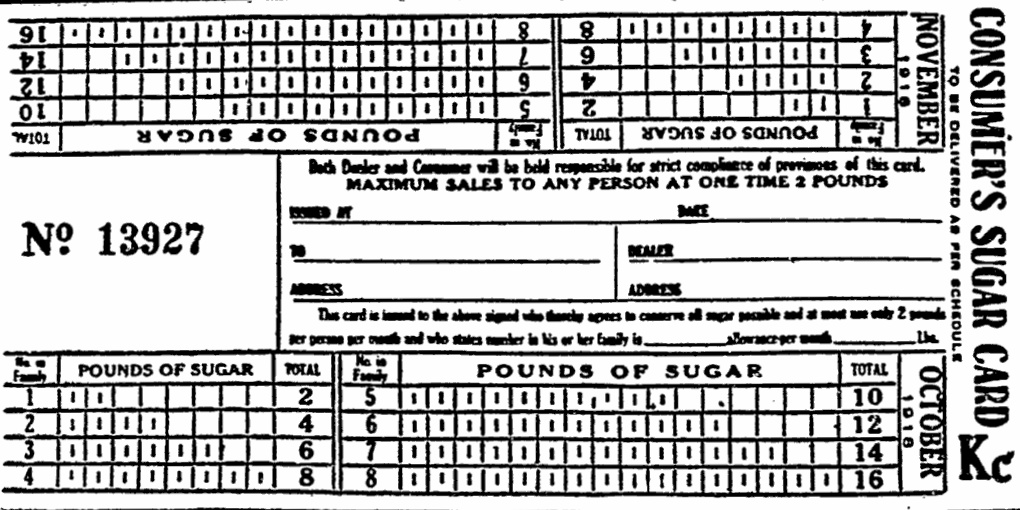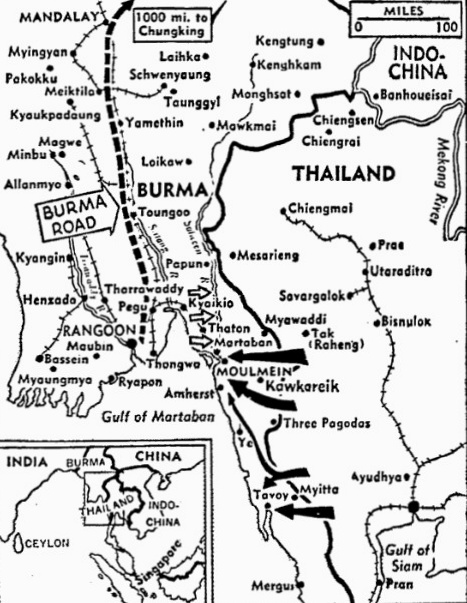The Pittsburgh Press (February 2, 1942)
U.S. WARSHIPS BLAST SIX BASES IN PACIFIC
Fleet shells planes bomb enemy isles
Luzon defenders smash ‘best troops;’ Navy loses 11 planes
By Walter Logan, United Press staff writer
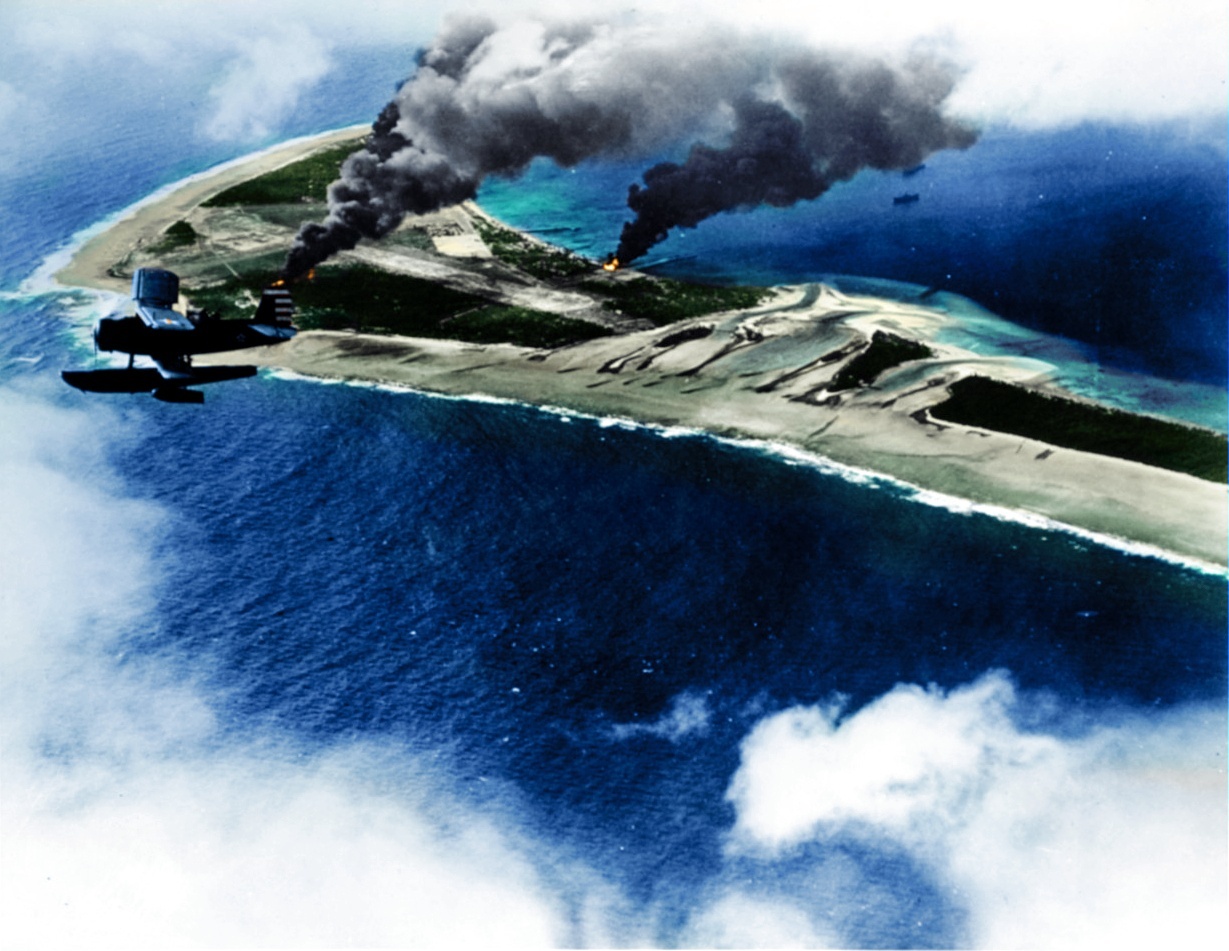
(U.S. Navy photo)
Washington –
The United States today carved three big notches on its Pacific guns for major Army and Navy victories over Japan.
-
Gen. Douglas MacArthur’s defenders of Bataan Peninsula above Corregidor Fortress have shattered two “desperate” Jap attacks in one of the most savage battles of the Philippine struggle, the War Department reported.
-
The U.S. Pacific Fleet, reported in action for the first time, collected partial revenge for Japan’s treacherous assault upon Pearl Harbor by sending tons of bombs, torpedoes and shells onto six Jap bases in the Marshall and Gilbert Islands.
-
The U.S. Army’s huge guns on fortress islands in Manila Bay dished out to the Japs a sample of what U.S. forces hope will keep Japan from using bay facilities indefinitely. They blasted into oblivion a Jap force of barges preparing to take Corregidor Fortress by storm.
Extensive damage done
In Bataan, slashing down the west coast “like the fingers of a clawing hand,” picked forces of Japs – called Tatori – struck southward, while across the narrow thumb of land, the Japs’ 65th Division launched a full-force assault.
The Jap west coast forces were virtually annihilated in fierce fighting in the underbrush of the coastal region. Artillery and mortar fire drove them to the sea, where those who attempted to escape by boats were drowned.
On the east coast about 17 miles north of the tip of Bataan Peninsula and Corregidor, crack Jap forces launched simultaneous frontal and encircling attacks, only to be ripped apart before the assault was well underway, the Army said.
‘Heavy losses’ for Japs
It was stated:
The envelopment was repulsed with heavy losses to the Japanese.
Along the west coast, where the Japs had previously been attempting to strike down from the Port Binanga region, the new Jap assaults “have now been completely mastered,” the Army communiqué reported.
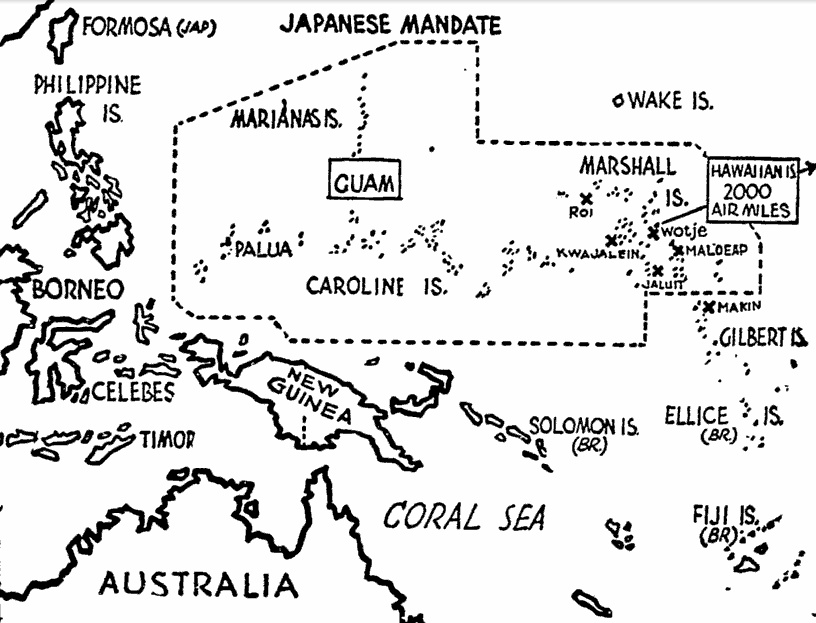
In its first big offensive, the U.S. Pacific Fleet hurled aerial torpedoes, bombs and shells into six Jap bases – indicated by Xs – in the Marshall and Gilbert Islands, 2,000 miles from its own base at Pearl Harbor, Hawaii. Combat vessels of all types participated and did extensive damage to shore installations and harbor shipping. The U.S. lost 11 planes.
Details of the extensive damage wrought by the Navy’s surprise attack on Jap bases, midway between Hawaii and Australia, however, may remain secret for some time.
The Navy reported only that:
Many enemy fleet auxiliaries were sunk, beached or otherwise damaged extensively… Japanese military installations on shore were hit hard by naval aviation units and shell fire… Many enemy airplanes were destroyed both on the ground and in the air… Surface ships heavily bombarded several of the enemy’s key shore positions… Naval aircraft struck the enemy positions and ships with bombs, torpedoes and guns.
An official German broadcast recorded in London quoted a Tokyo dispatch as saying that U.S. aircraft carriers, cruisers and destroyers have attacked Jap positions in the Marshall Islands, causing “slight damage.” The Japs claimed that Jap losses totaled 28 killed and wounded.
No big warships found
But between the lines of the naval communiqué could be seen the signs of a “knockout” blow at important Jap bases – a blow delivered with the same element of surprise used by the Japs at Pearl Harbor, except that the Japs attacked while still negotiating for peace.
The term “fleet auxiliaries” was not clarified by the Navy. It said only that:
…no large enemy combatant vessels were found.
Auxiliary vessels usually include all parts of the fleet train except fighting ships – transports, tenders, tankers and the many other smaller ships that serve the fleet.
The U.S. force must have been of considerable proportions, since it was looking for and was prepared to meet major enemy warships.
Adm. Chester W. Nimitz, Commander-in-Chief of the Pacific Fleet, said in a statement in Honolulu that warships of all types participated in the attack.
The attack was carried out with surface and air units of the fleet, the latter apparently from aircraft carriers.
Admit loss of 11 U.S. planes
The Navy reported only minor damage to two of its surface vessels, “slight” personnel losses and the loss of 11 aircraft.
The American attack was such a surprise that the Japs apparently never really got going. Destruction of many Jap planes on the ground indicated that the enemy was caught unprepared for a major assault.
The Navy communiqué gave no indication when the attack occurred, but the fleet units may have slipped past the treacherous coral reefs of the Marshall Islands under cover of darkness, safe from discovery by Jap patrol planes.
Then, with conditions favorable for utter surprise, the attack began. The Navy – which perfected dive bombing and the art of destroying enemy craft on the ground – presumably gained an early advantage by destroying enemy planes before they could take off and give fight.
Blow invaders out of water
It was the first time the Pacific Fleet, under Adm. Nimitz, has been mentioned in major action by the Navy. The brilliant successes in the Battle of the Makassar Strait were won by units of the Asiatic Fleet under Adm. Thomas C. Hart.
The Philippines front
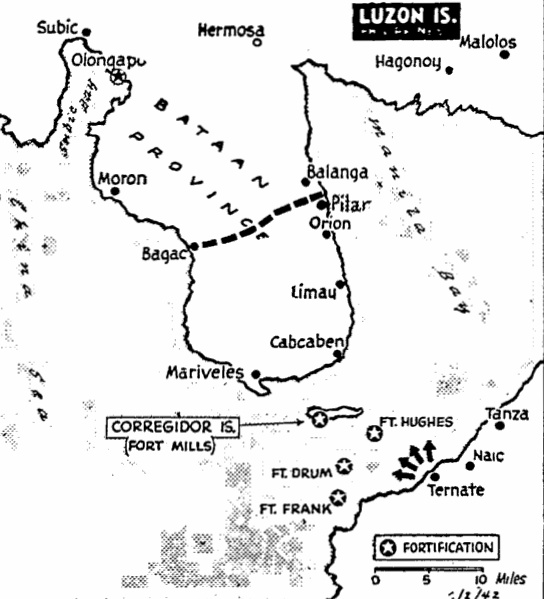
U.S. forces beat off the enemy again from the front and rear of the defense lines in Bataan Peninsula. Big guns of the island forts in Manila Bay destroyed Jap invasion barges massed at Ternate, about 10 miles from Corregidor. The broken black line indicates the approximate position of Gen. MacArthur’s frontlines.
The destruction of the Jap force attempting to “take” Corregidor was spectacular support of the belief of many military experts that Gen. Douglas MacArthur might be able to hold that fortress indefinitely. It also substantiated belief that if the Japs do take it, their loss of life and of equipment would be terrific.
The invasion force massed at the port of Ternate, on the mainland 10 miles across the mouth of Manila Bay from Corregidor. But American forts at the opening of the bay – Corregidor, Fort Drum, Fort Frank and Fort Hughes – were on the alert. Once the invaders were assembled, all the guns of those forts turned suddenly and let loose a barrage that literally blew the invaders out of the water.
Jap force destroyed
There was no indication of the size of the Jap force, but it was believed that an attempt to take Corregidor would not be made with anything but a major unit, fully equipped. Whatever its size, the force and its equipment were “destroyed.”
The island forts guard the mouth of Manila Bay and, while they are held by U.S. forces, keep Japan from benefitting by the capture of Manila.
This was the first time that Japan has attempted to take those bastions by invasion. Time and again, during the early days of the war, Japan tried to bomb them into submission. But the forts are strongly constructed and their vital parts are hewn out of stone. In underground chambers are stored food and munitions – impregnable to aerial bombing.
Fort Drum, on the island of El Fraile, is unique. It was constructed during World War I by the Navy for use by the Army. Of steel and reinforced concrete, it is similar to a “land battleship” – with revolving gun turrets. The guns of Fort Drum, nearest to Ternate, figured prominently in the blasting of the invasion forces.
The fortresses also guard the rear of Gen. MacArthur’s units which are battling against great odds on Bataan Peninsula to the north.
Japs use best troops
Directly quoting a dispatch from Gen. MacArthur, the Army said that the Jap forces used in the “desperate venture” along the Bataan west coast were the best that the Nipponese have in the Philippines.
Gen. MacArthur said:
They were shock troops especially trained and selected. They have now been entirely destroyed. They resisted with the courage which is characteristic of Japanese troops, but at the end were glad to surrender. They are being treated with respect and consideration which their gallantry so well permits.
The War Department said that captured aerial maps revealed the plan and “urgent character” of the double-pronged offensive, indicating that the Jap generals had attempted to deliver a knockout blow to U.S. resistance on the Philippine mainland after suffering enormous losses in the past eight weeks of fighting.
The fighting, on both flanks of the mainland approaches to Corregidor Fortress, was said to have occurred over a period of several days.
The communiqué identified the participating Jap forces as the 16th Division in the west and the 65th Division in the east. A Jap division numbers about 15,000 men.
2,000 miles from Pearl Harbor
The true value of the naval attack on the Jap island bases can easily be underestimated. The islands lie only 630 miles south of Wake Island and only 2,000 miles southwest of Pearl Harbor. The attack on Pearl Harbor may have been organized from the islands, for they are in range of heavy bombers, and the numerous coves make ideal submarine headquarters.
Destruction of Jap bases there – and possibly later capture by Allied forces – would greatly strengthen the Allies’ position in the South Pacific. Before the U.S. naval attack, the islands were ideal bases for bomber and submarine attacks on Allied supply lines.
The attacks were made specifically on the Marshall Island bases of Jaluit, Wotje, Kwajalein, Roi and Maloeap and on Makin, a British island occupied by the Japs since Dec. 7. Wotje, principal Jap base in the island, lies nearly in the center groups of Jap-mandated islands on the Pacific. Before World War I, the three groups – Marshalls, Carolines and Marianas – belonged to Germany. Japan captured them during the war and they were placed in her “protection” at the Paris Peace Conference. They were almost unheard of again until the 1931-32 “Manchurian incident” when Japan withdrew from the League of Nations and other members questioned her right to a mandate over them, coincident with charges that Japan was fortifying them.
The Marshalls, 1,400 islands occupying a total area about twice the size of Los Angeles, are the strangest islands of the Pacific. Most of them are coral reefs a few yards wide and miles long, on which palm trees flourish. In some places, the palm trees form parallel rows which disappear into the horizon. They have been “closed” to visitors since Japan formally took them over in 1920.
The islands lie just above the water. The highest altitude is 33 feet above sea level. Many form circular reefs – perfect natural harbors. It is these harbors which have been developed and fortified by the Japs.
